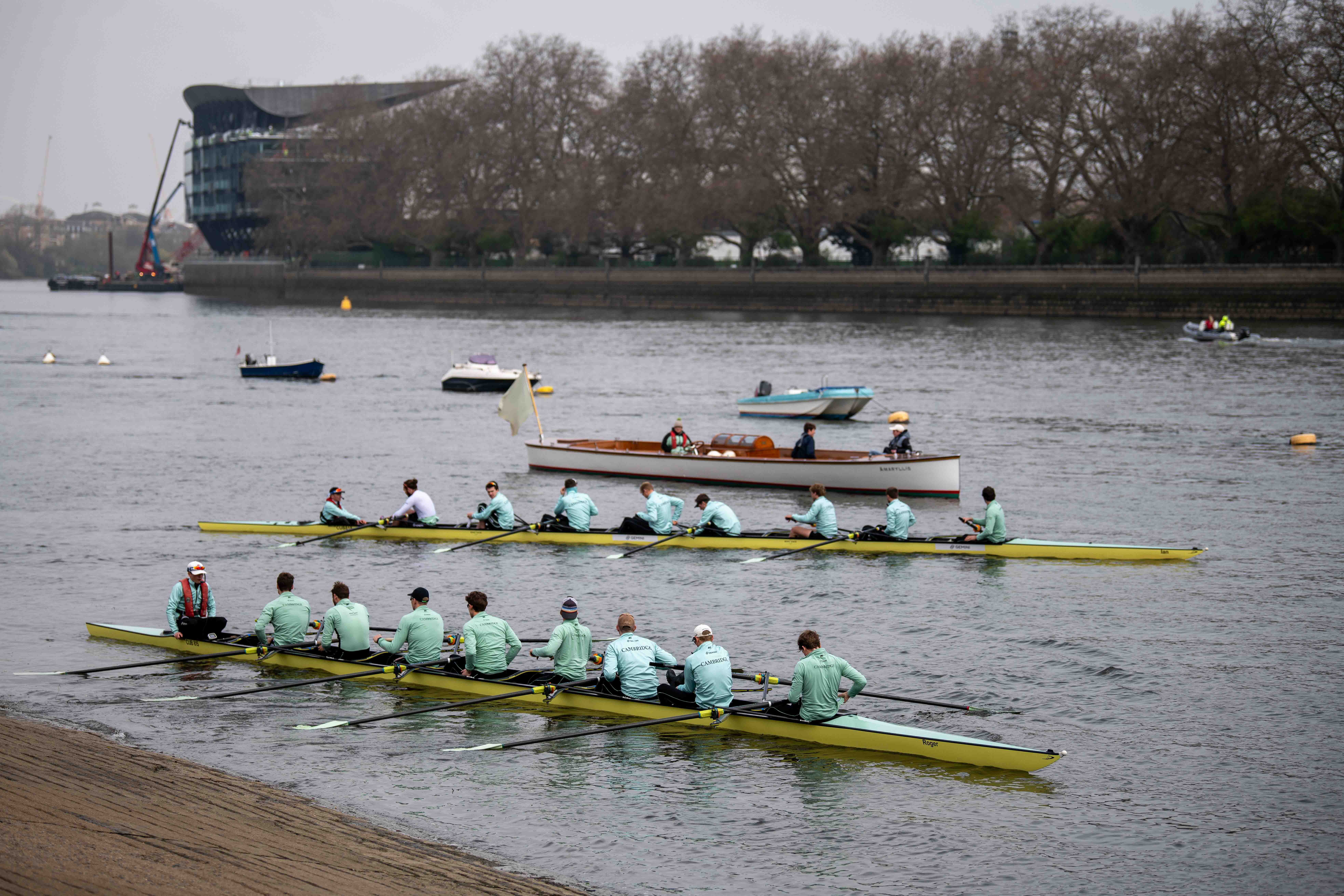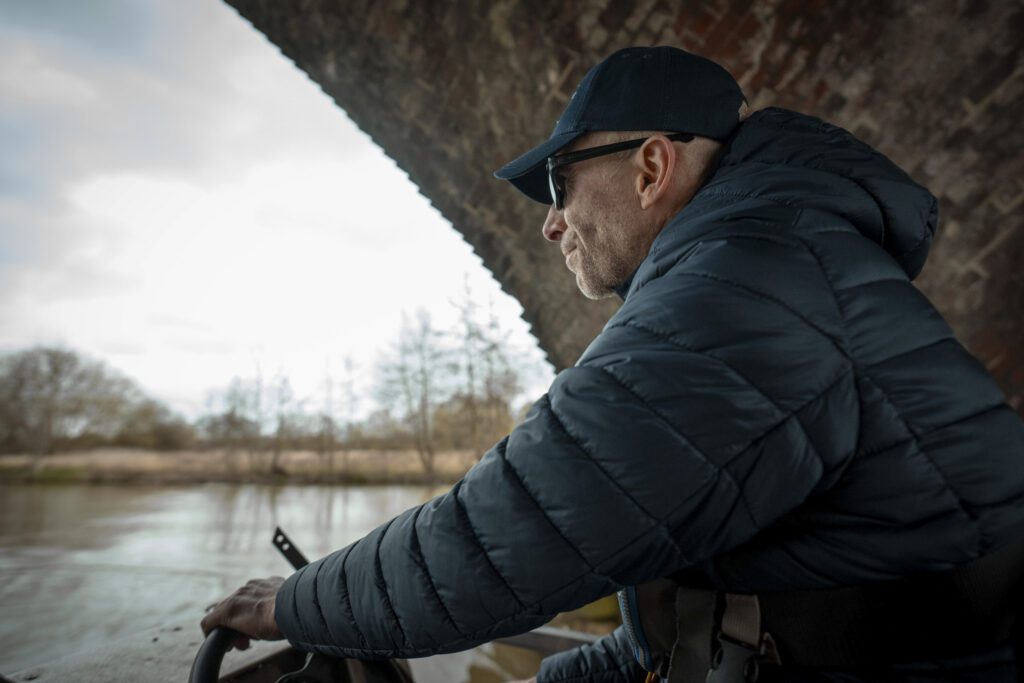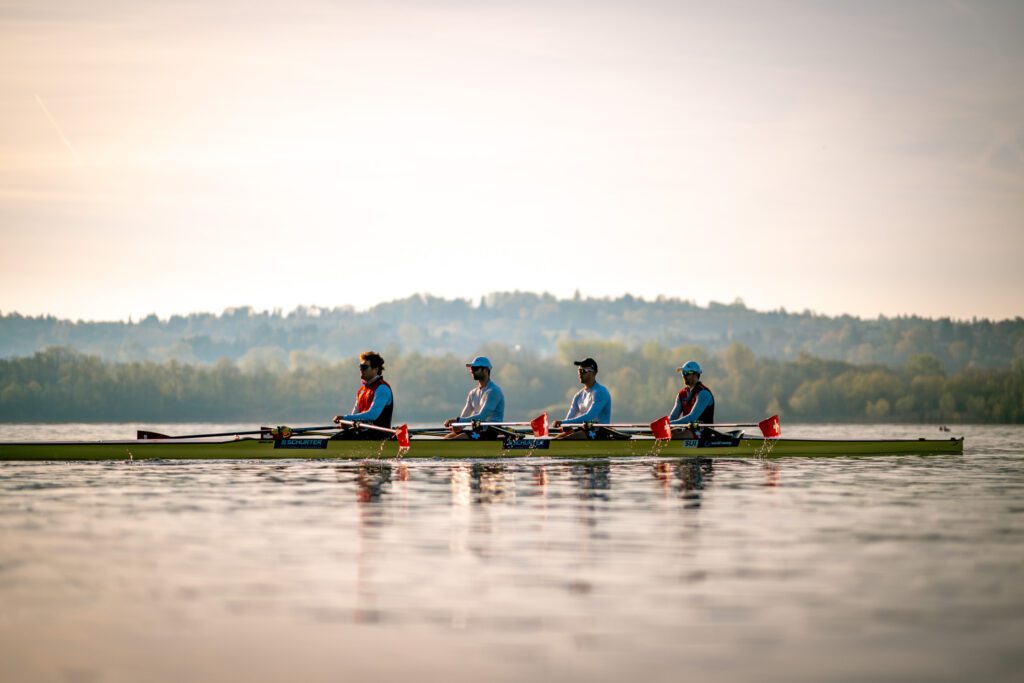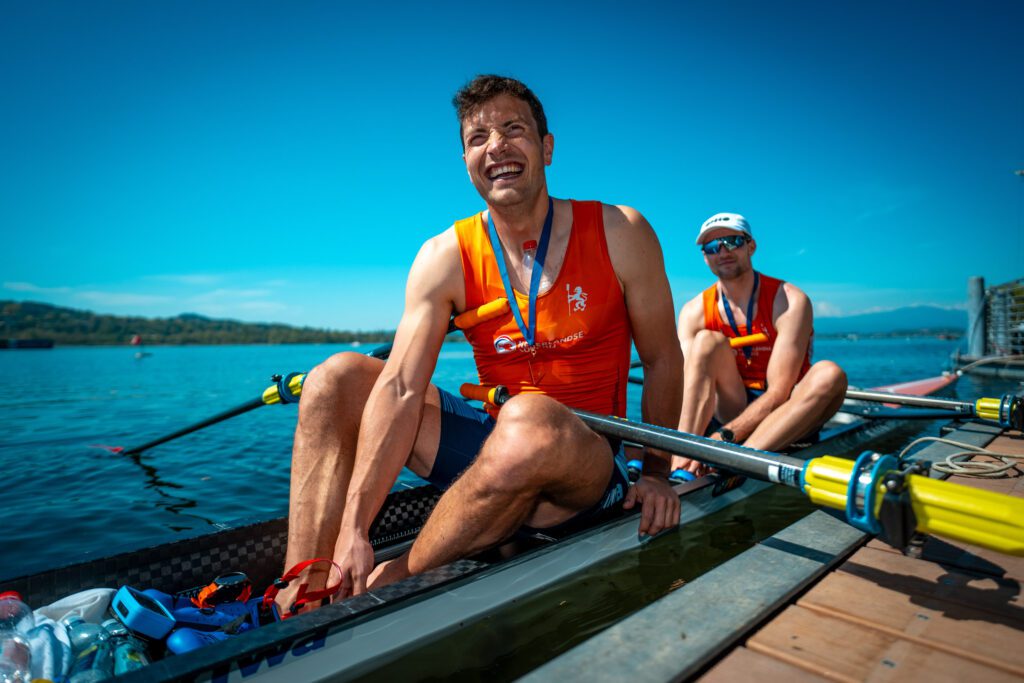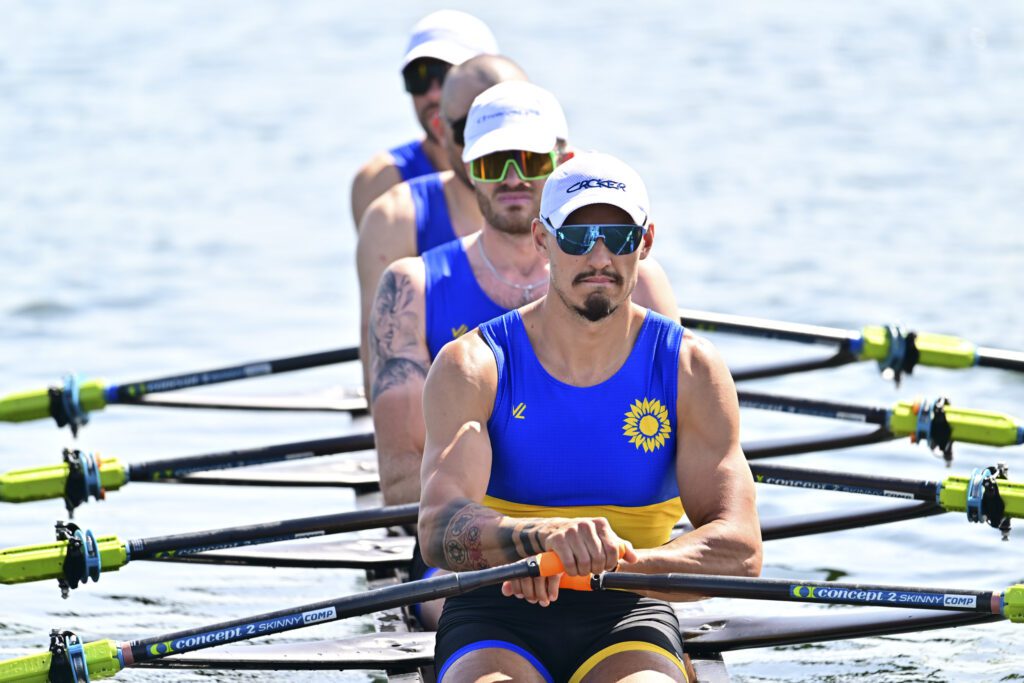Most Boat Race spectators rarely notice the flotilla that streams behind the two rival crews. It is a soggy oversight for those closest to the river’s edge as the wake washes through. Among the chasing fleet is Amaryllis and its knowledgeable driver Dan Wood. For the last twenty years Dan, a former competitive snowboarder, has held the unique position of launch driver for Cambridge. Each year he lives with the coaches and witnesses the team’s waterborne activities during race week. From one year to the next he quietly spots the subtleties of squad culture, coxing talent, and the attitudes, foibles and frailties of the coaching personnel. What follows are the rare close-quarter observations from someone who is neither insider nor outsider.
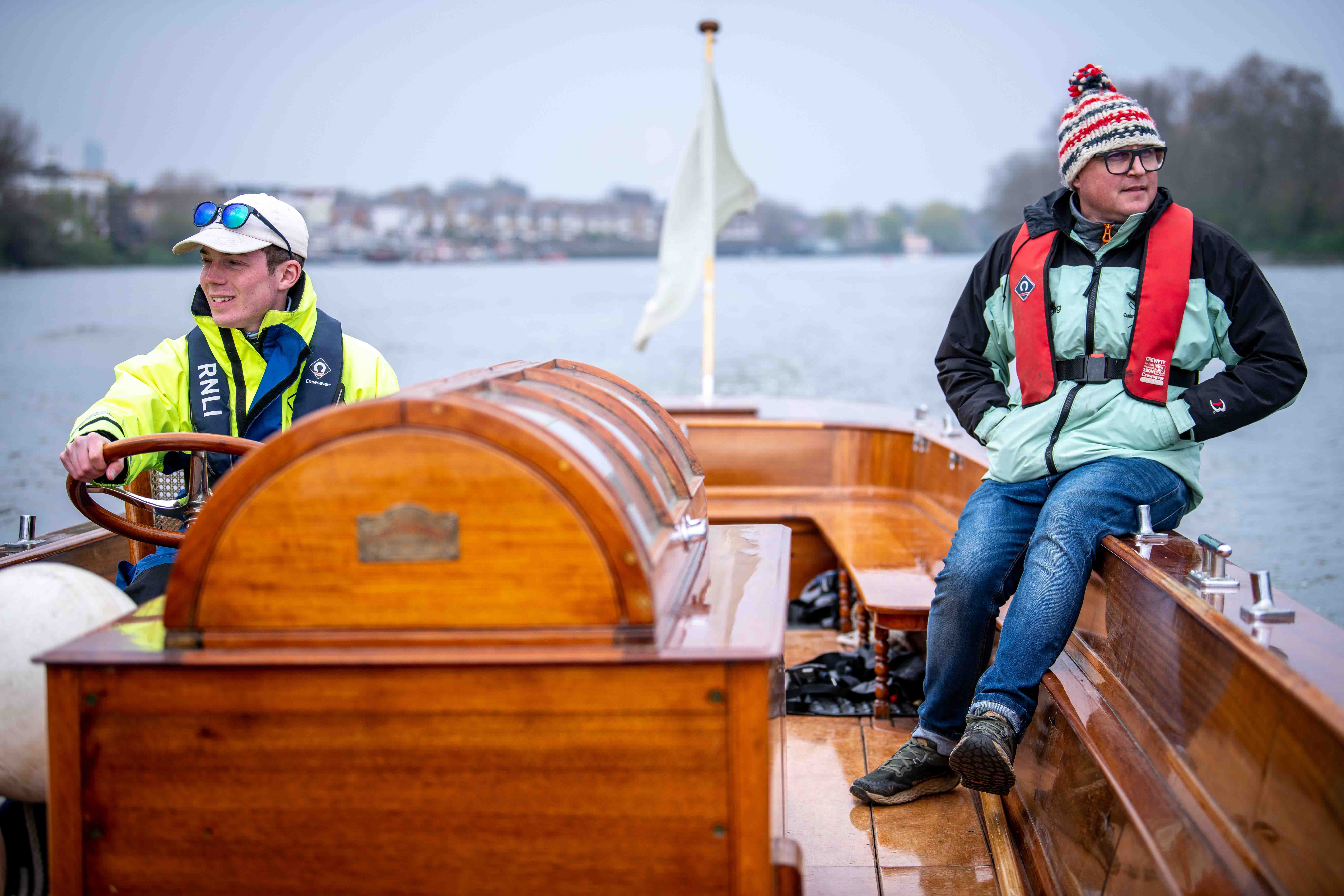
Photo Dan Wood looks on as Matthew Holland takes a spin at the wheel.
Credit Benedict Tufnell
His direct involvement with the Cambridge crew starts in earnest during The Boat Race week. “I see that real ramp up of interest. The thing is, the squad have been out in the wilderness in training camp and are then plunged back into the spotlight. The pressure builds throughout the week. Everyone is pretty cool Monday and Tuesday but by Thursday and Friday you really start to see it. The buzz of it. It all becomes a bit real. It is quite an intense period.”
Having spent all his working life on the Thames, Dan teaches the Cambridge coxes the best line to steer: “Some say there’s the Cambridge version of where the course is and there’s the Oxford version. The coxes should be able to draw it in their mind’s eye.” When it comes to racing “they want to be in the fastest stream” and not “across the tide.” He takes the coxes aboard: “The ones who have a real-good feel for it can do it driving Amaryllis. She’s a bit quirky but they adapt. The touch on the rudder is gradual and they sort of feel how the water is working over the rudder. There are no sharp turns in The Boat Race course. That is a big thing.”
Dan recalls his star pupil, Rebecca Dowbiggin, who coxed the winning Cambridge crew of 2007: “She was amazingly good, absolutely bang on the money and not aggressive either. You can get two strong characters racing each other and they want to go to battle straight away. They have all this legendary folklore stuff in their heads. I never saw that with Rebecca. It wasn’t about the myth but the reality. I remember with all the bridges she would be dead parallel between the buttresses and that doesn’t start when the bows are going through. That starts way back in the bend.”
“Suddenly all eyes are looking down on you, like some sort of gladiatorial arena.”
Dan Wood
Appreciating the movements of the river, and the influences of wind, stream and tide is critical for success as is knowing heaps of race strategies and tactics. Dan says: “Some coxes have an amazing peripheral; they can feel side to side where they are on the water. But still, you pile on team expectations, cheering crowds, noisy helicopters. The fact that it is all on television and all the other stuff going on and it is very easy to make mistakes – just to lose it for a split second. Success is a real concentration thing.”
What about the Tideway guru himself: Does he feel the pressure? “A little bit: There’s a few nerves, you know. It’s a big thing. Generally, when you are afloat it is a fairly calm place. That’s why people go afloat, isn’t it, it’s calming? But that changes on Boat Race Day. When you come through Putney Bridge it’s like flicking a switch: Suddenly all eyes are looking down on you, like some sort of gladiatorial arena.”
Dan recalls his first race: “I’ve done it quite a few times now but then I’d only seen it on TV and I’d never been afloat anywhere near the start of The Boat Race or during the race itself.” The only advice Dan received was to not get left behind off the start. “Amaryllis is the only launch that has her rudder over the stern all the newer launches have their rudders underneath. Everybody kept telling me, whatever you do don’t get left behind. If you do and you catch the wash from the boats ahead, the rudder is out of the water and she literally starts to surf. So then you’ve got two problems, you are trying to catch up but you can’t steer. Historically that has happened, they got caught on a wave and Amaryllis took a bit of a run and collided with one of the other launches. Some of the people who had been on Amaryllis when that had happened were with me for my first race.”
Dan waited under Putney Bridge, both Oxford and Cambridge ahead, primed and ready to go, he watched for the umpire’s flag to drop – the signal to start: “The coxes’ hands were going up and down. Like the America’s cup before the start line, there’s lots of tactical maneuvers and gamesmanship. You are in the shadow of Putney Bridge and I can hear the noise. The historic accident is playing on my mind and I really didn’t want to stall her! While waiting I’m keeping her straight to avoid hitting the stationary stake boats when we go. The coxes had been up and down, up and down, and then I glance up and see the flag drop. It was perfect – everything fell into place. I got her into gear and we’re off! The noise goes up and everyone on Amaryllis is cheering. I’m enthralled by the racing. Then the first time I look around either side of me and I realise I’m more than a boat length up on the other launches. I remember easing back and getting a bit of a look from the other launch drivers. But after that it was fine. Yeah, that’s the memory, that was my first one.”
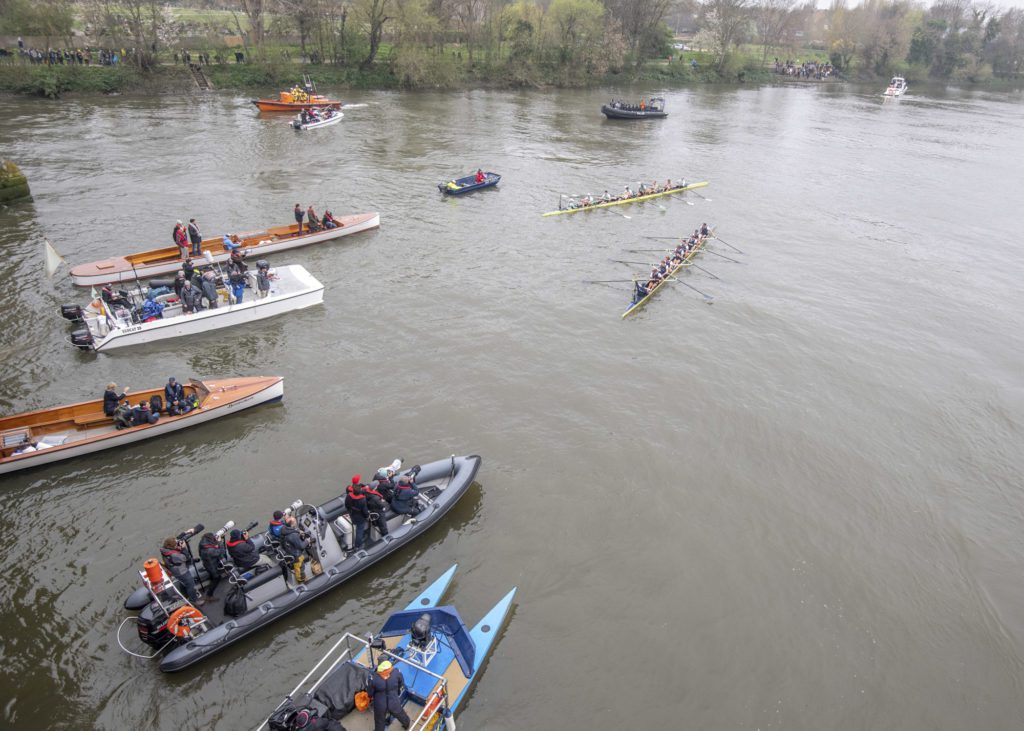
Photo Oxford, Cambridge and the chasing flotilla emerge beneath Chiswick Bridge.
Credit Benedict Tufnell
Since then Dan has followed many races and worked with five head coaches. He believes prior experience on the Tideway is critical to becoming a great head coach: “high-level international and multi-lane experience is great but there is a slight difference with the total uniqueness of The Boat Race. It takes someone who has grown up with it or been involved with the Tideway a lot.” Dan has a lot of respect for the experience that Donald Leggett brings to the club as a long time veteran of CUBC. With such intense media exposure, the role of Head Coach is a tough one: “You see the dynamic. Sometimes I think the head coaches come all that way but then really feel the pressure.”
Steve Trapmore was the head coach of Cambridge from 2011 to 2018 and Dan saw firsthand his strong work ethic: “He is a total grafter. He probably did too much himself. But that’s not a criticism, that’s just how he is. I remember Steve being like an athlete; like road craft in cycling. You could see he was an oarsman and just… you almost had to convince him, like, we are on the same side man. And then he would communicate really well. I’ll tell you one thing when Steve arrived – I could see the whole crew was so stoked. He gave the whole Cambridge camp a real lift. It was a completely different atmosphere.”
Of the current head coach, Rob Baker, Dan too has the highest of praise: “I’ve known Rob for a long time. He has great Boat Race pedigree and is a really good communicator. For example, on the water you don’t want to wash anyone down and you want to keep it as quiet as possible but everyone still wants to be able to see. There’s an almost an unspoken thing during those sessions. It requires everyone to work together.”
“The thing is, the squad have been out in the wilderness in training camp and are then plunged back into the spotlight. The pressure builds throughout the week.”
Dan Wood
“You want to see a bit of passion…” Dan is referring to head coach leadership but his words could equally apply to his own passion for vintage boats. He is the caretaker and driver of Amaryllis; a carvel construction wooden launch built in 1928. The boat has as much character as its pilot and it wouldn’t look amiss on the film set for The Great Gatsby. “She is special in a lot of ways and a great bit of history.” Dan talks fondly of the boat and is well-versed in the intimacies of its history and its construction not to mention how it handles. One of his roles is to “look after her” because “she is a bit of an elderly stateswoman”. With pride he says that the purpose for which Amaryllis was first built is still the same purpose for which it exists today: to follow rowing races on the Henley Reach and the Tideway.
Preparations for Amaryllis start weeks before The Boat Race, by mid-March Dan is taking off the covers and re-commissioning the engine to ensure the boat is race-ready. After a test run Dan drives Amaryllis from Henley to Putney. It is a long journey done in two stints and “unless absolutely in flood” Amaryllis copes “with most stream conditions.” The first stop is in Windsor after four or five hours on the river. “Basically I’m getting to where I need to go but if there’s a problem I’ve got my tools and someone could even come out that night. I use that as a bit of a shake down.” The next stint requires another seven hours on the river before arriving at Putney. Dan and Amaryllis are then ready to start work with Cambridge the next day, the Monday of Boat Race week.
For all the “vagaries on top of vagaries” that flow through Boat Race lore and the Tideway itself, there is an unique understanding of the “nature of the race” within those closest to it. And that’s something Dan has in spades. So this year keep one eye open for the wise old river dog chasing behind the sparkling Blues out front.
